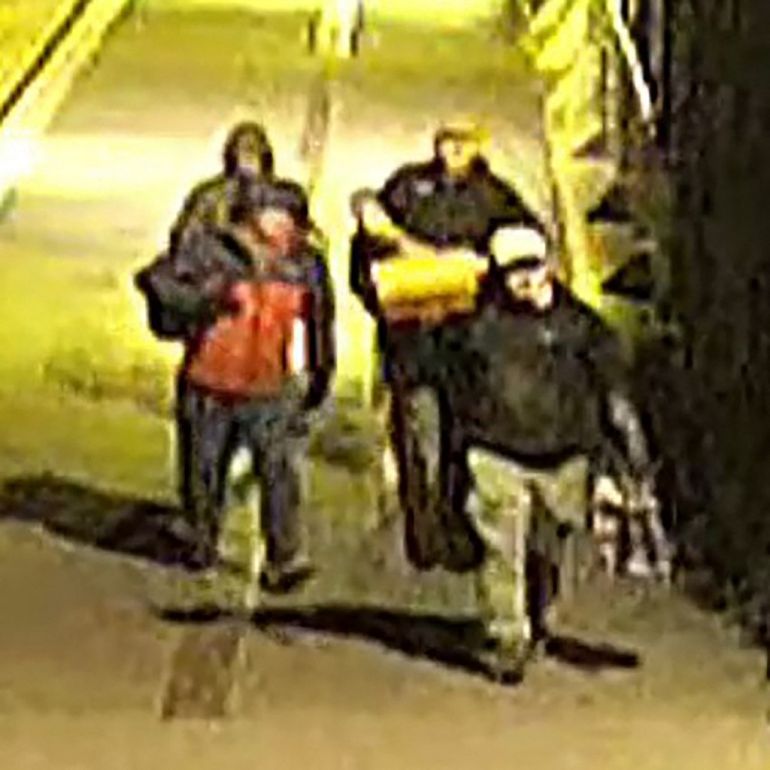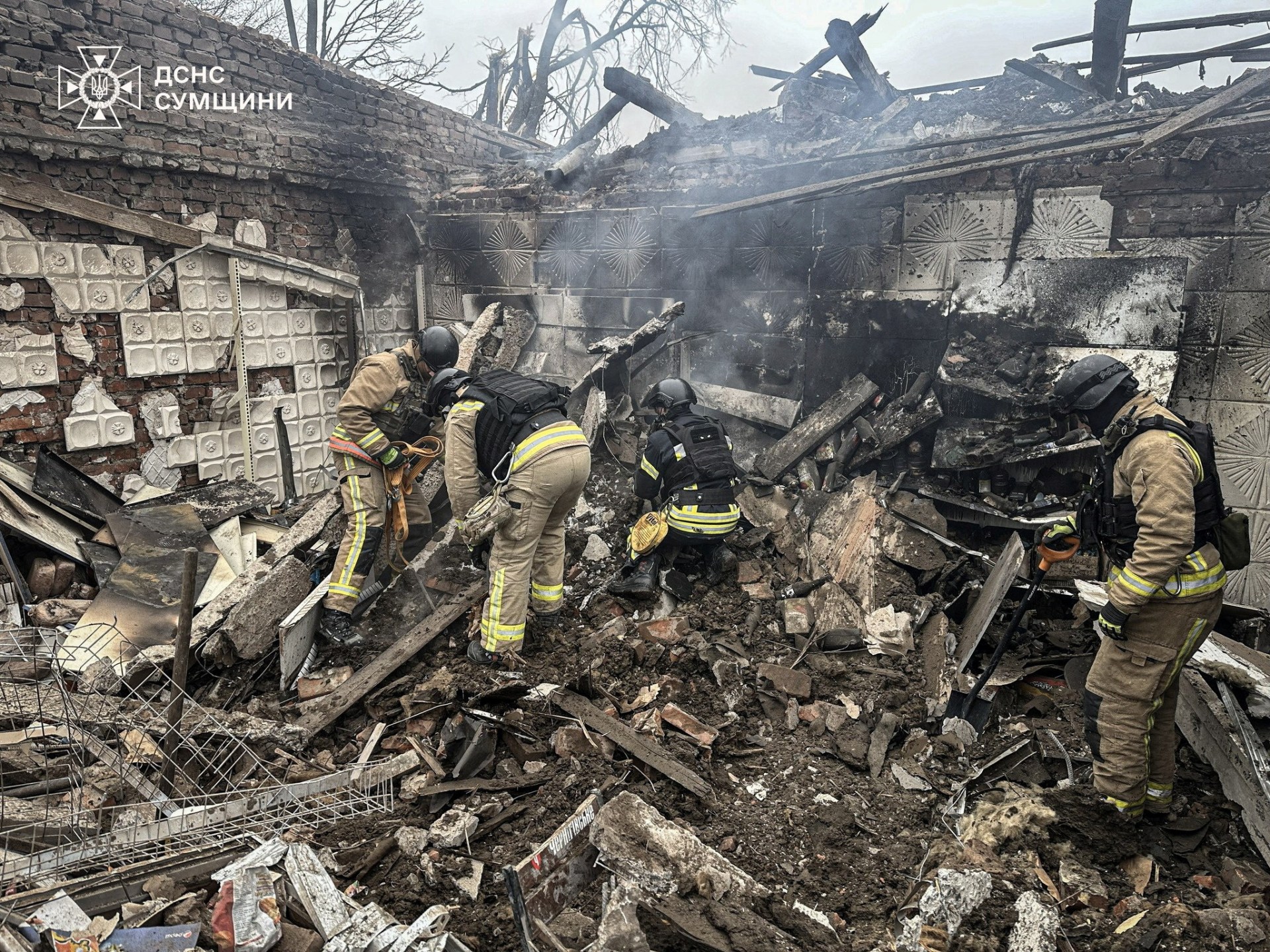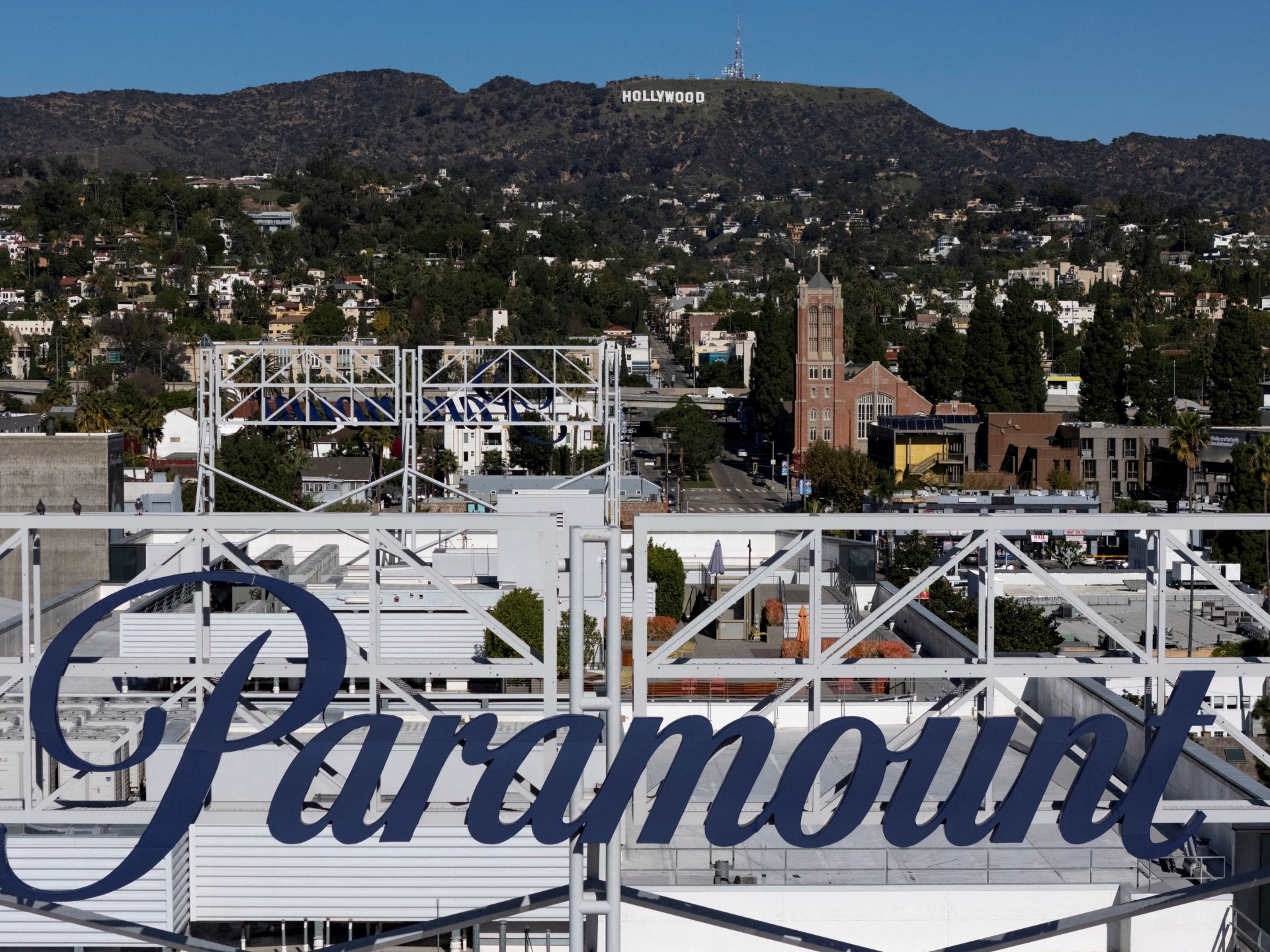Warner Bros Discovery’s future is in the spotlight amid a hostile bid by Paramount-Skydance to take over the storied media conglomerate that owns CBS, Comedy Central, Nickelodeon and major movie studios, days after it agreed to a deal with streaming giant Netflix.
Paramount put in a $108bn bid, compared to Netflix’s $82.7bn. Netflix’s move came with widespread antitrust concern, with progressives like Democratic Senator Elizabeth Warren saying it would limit access for consumers and filmmakers in Hollywood. The White House also said it would watch the deal with heavy scrutiny.
Recommended Stories
list of 4 itemsend of list
Paramount’s bid for Warner Bros Discovery, however, was undercut by a slew of conflicts of interest and connections to the administration of United States President Donald Trump, and accompanying concerns about freedom of expression.
Those come in addition to recent changes at CBS News, where a conservative opinion writer has been brought in as the top boss, and there is pressure on coverage critical of Trump, including by late-night show hosts.
Kushner conflict
One of the sources of funds for Paramount’s bid is Jared Kushner’s investment firm Affinity Partners, alongside financing from both Saudi and Qatari sovereign wealth funds. Kushner is married to Trump’s daughter, Ivanka, and served in an advisory role during the first Trump administration.
“If you were teaching a class at business school on conflicts of interest, this would be Exhibit A,” Nell Minow, chair of Portland, Maine-based ValueEdge Advisors, told the Reuters news agency.
Trump on Monday told reporters that neither Paramount nor Netflix “are friends of mine” and that he had not spoken to Kushner about the deal.
However, just last week, Trump told reporters that he would be involved in the decision about whether the Warner Bros-Netflix merger was to go through.
“I’ll be involved in that decision,” Trump told reporters as he arrived at the Kennedy Center for its annual awards show.
The Kushner connection is far from the only conflict looming over the hostile takeover. Paramount is now owned and led by David Ellison, son of billionaire Larry Ellison, the Oracle cofounder and a close ally of the president.
Pressing the press
In the weeks before Paramount’s merger with Skydance, its CBS News network settled a lawsuit brought by Trump over an interview with then Democratic presidential hopeful Kamala Harris, which he claimed had been doctored.
The network described the allegations as baseless, but settled anyway for $16m. On the heels of that decision, Bill Owens, the executive producer of the show 60 Minutes that had been at the heart of Trump’s attacks, resigned. National Public Radio, citing two CBS staffers, said that Owens had “lost independence from corporate”.
Days later, late-night host Stephen Colbert, also on CBS, called the settlement a “bribe”, and soon after the company announced that The Late Show, which he has hosted since 2015, would be cancelled in 2026.
Although the show was losing money, the timing of the decision to cut it was widely viewed as political.
Paramount’s merger with Skydance was approved a few weeks later. Since then, CBS News – which the president has long accused of being unfair to him – has made decisions that, critics say, are increasingly aligned with Trump’s preferences.
Among them was the appointment of ombudsman Ken Weinstein, tasked with overseeing fairness and adjudicating bias allegations. His appointment itself has been viewed as partisan. Weinstein was once a nominee to be the ambassador to Japan during Trump’s first term and has no media background.
In October, Paramount purchased The Free Press, a right-leaning publication, for $150m and installed its founder, Bari Weiss, as CBS’s editor-in-chief even though she had no prior TV experience.
“They hired an opinion columnist, Bari Weiss, to run a news network, paying enough for her services, [money they could have used] to retain plenty of the journalists they laid off. Not because running a successful Substack somehow qualifies her to manage a broadcast news giant, but because her politics are aligned with their own and, to a large degree, Trump’s,” Seth Stern, director of advocacy at the Freedom of the Press Foundation, told Al Jazeera.
Since her appointment, prominent anchors and producers have resigned. Claudia Milne, who oversaw standards and practices, and John Dickerson, co-anchor of the CBS Evening News, who has been with the network since 2009, both said they were leaving, as did the show’s other anchor, Maurice DuBois.
On Wednesday, CBS News announced that Tony Dokoupil would anchor the flagship evening news programme. Dokoupil has been serving as a co-anchor for CBS Mornings and joined the network in 2016.
In August, Margaret Brennan, moderator for another prominent CBS show, Face the Nation, a Sunday public affairs programme, interviewed Department of Homeland Security Secretary Kristi Noem. The interview was edited, a standard practice given time constraints. The administration complained, and the network changed its policy.
But that directive wasn’t the case for 60 Minutes. In October, longtime CBS News talent Norah O’Donnell asked the president about his pardoning of Binance founder Changpeng Zhao. In 2023, Zhao had pleaded guilty to money laundering but now had business dealings connected with the Trump family’s cryptocurrency company, World Liberty Financial.
The network opted not to run that part of the segment, which Democratic Senator Chuck Schumer pointed out was comparable to the very same allegation Trump made against the Harris interview of being “doctored”.
The network also cut the president’s remarks about the settlement.
“Actually, 60 Minutes paid me a lotta money. And you don’t have to put this on, because I don’t wanna embarrass you, and I’m sure you’re not,” Trump said as seen in a transcript of the full 73-minute interview that was published online.
The network complied with the president’s request. It did not air that part of the interview.
The president continues pressuring the network, while simultaneously praising the new management’s apparent friendliness.
After 60 Minutes aired an interview with outgoing Republican Congresswoman Marjorie Taylor Greene – who has recently become more critical of the president – Trump erupted on social media.
“My real problem with the show, however, wasn’t the low IQ traitor; it was that the new ownership of 60 Minutes, Paramount, would allow a show like this to air. THEY ARE NO BETTER THAN THE OLD OWNERSHIP, who just paid me millions of Dollars for FAKE REPORTING about your favorite President, ME!” he wrote on Truth Social.
‘Political manoeuvring’
Paramount’s bid for Warner Bros Discovery includes CNN, another major news network.
The Wall Street Journal reported on Tuesday that David Ellison, on a trip to the White House, told the president that Paramount would make “sweeping changes” to CNN, a frequent focus of Trump’s anger, if the merger were to go through.
On Wednesday, Trump weighed in on the possible sale, saying, “I think CNN should be sold.”
On CNBC, David Ellison floated the idea of merging the networks and their respective newsgathering operations.
“We want to build a scaled news service that is basically, fundamentally, in the trust business, that is in the truth business, and that speaks to the 70 percent of Americans that are in the middle,” Ellison told the network’s David Faber.
But media experts are wary of such a move.
“It’s fair to say that a Netflix purchase of Warner Brothers would raise legitimate antitrust questions. However, the alleged political manoeuvring by Paramount to bring CNN and CBS under the same corporate roof – with implicit pledges to make both outlets’ news coverage more friendly to this administration – is even more concerning,” Rodney Benson, professor of media, culture and communication at New York University, told Al Jazeera.
“This would constitute a dramatic increase in the concentration of news media under the control of a single owner with close ties to the party in power. It’s a choice between two bad options, but as currently structured, a Paramount purchase would be objectively worse for American democracy and freedom of the press.”
The Guardian also reported that Larry Ellison even floated cutting anchors critical of the president, including Erin Burnett, who hosts a primetime show on the cable network. The elder Ellison is not directly involved with Paramount-Skydance.
“Throwing out the credibility of CNN and other WBD [Warner Bros Discovery] holdings might benefit the Ellisons in their efforts to curry favour with Trump, but it’s not going to benefit anyone else, including shareholders, in the long run,” Stern added.
Neither Paramount-Skydance nor Warner Bros responded to Al Jazeera’s request for comment.
If Netflix ends up as the buyer instead, CNN would not face similar concerns. The focus would shift to the merger’s potential impact on the film and TV production industry, particularly fears that it could limit competition.







